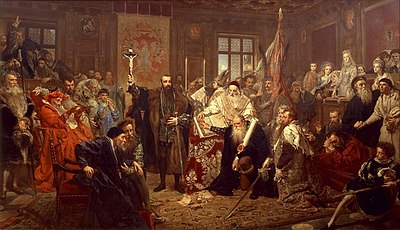| Union of Lublin | |
|---|---|
| Polish: Unia Lubelska | |
 | |
| Artist | Jan Matejko |
| Year | 1869 |
| Medium | oil on canvas |
| Dimensions | 298 cm× 512 cm(117 in× 202 in) |
| Location | National Museum of Lublin |
Union of Lublin (Polish : Unia lubelska) is an oil painting by the Polish artist Jan Matejko, finished in 1869, depicting the Union of Lublin. [1] [2] [3] The work is owned by the National Museum in Warsaw [4] and is displayed at the National Museum in Lublin.